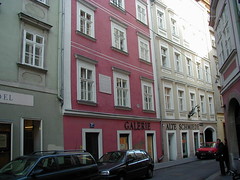F.A.E. - Violin Sonata (1853) "In Erwartung der Ankfunt des verehrten und geliebten Freundes JOSEPH JOACHIM schrieben diese Sonate
Robert SCHUMANN, Johannes BRAHMS, Albert DIETRICH
0:10 / Albert DIETRICH (1829-1908) - I. Allegro [13'40'']
13:37 / Robert SCHUMANN (1810-1856) - II. Intermezzo (Bewegt, doch nicht zu Schnell) [
2'26'']
16:16 / Johannes BRAHMS (1833-1897) - III. Scherzo (Allegro) [5'36'']
21:53 / Robert SCHUMANN (1810-1856) - IV. Finale (Markirtes, ziemlich lebhaftes tempo) [6'58'']
Franco GULLI, violin - Enrica Cavallo, piano (rec: June 1990, Genova)
 |
| Violinist Joseph Joachim and pianist Clara Schumann. Reproduction of pastel drawing (now lost) by Adolph von Menzel, 1853. (Photo credit: Wikipedia) |
The F-A-E Sonata, a four-movement work for violin and piano, is a collaborative musical work by three composers: Robert Schumann, the young Johannes Brahms, and Schumann's pupil Albert Dietrich.
It was composed in Düsseldorf in October 1853.
The sonata was Schumann's idea as a gift and tribute to violinist Joseph Joachim, whom the three composers had recently befriended. Joachim had adopted the Romantic German phrase "Frei aber einsam" ("free but lonely") as his personal motto. The composition's movements are all based on the musical notes F-A-E, the motto's initials, as a musical cryptogram.
Schumann assigned each movement to one of the composers. Dietrich wrote the substantial first movement in sonata form. Schumann followed with a short Romanze as the second movement. The Scherzo was by Brahms, who had already proven himself a master of this
form in his E flat minor Scherzo for piano and the scherzi
in his first two piano sonatas. Schumann provided the finale.









